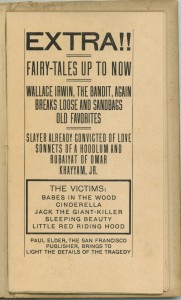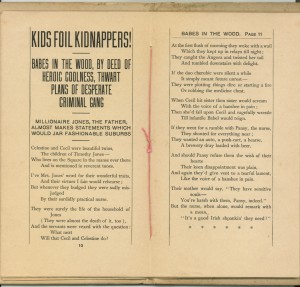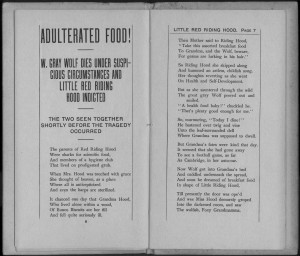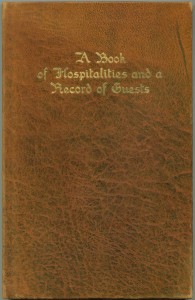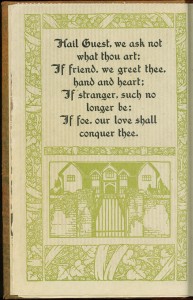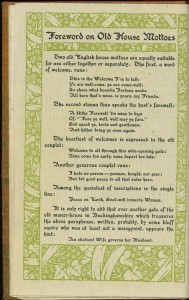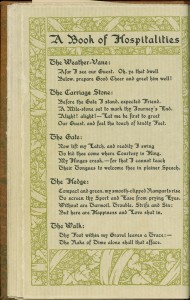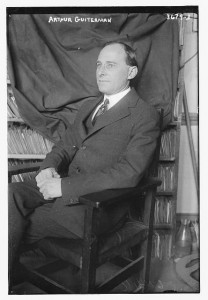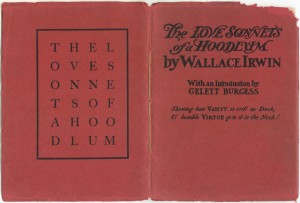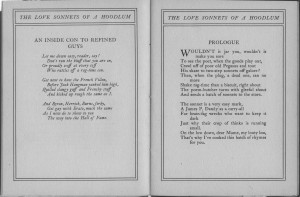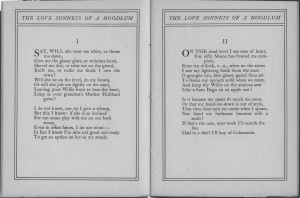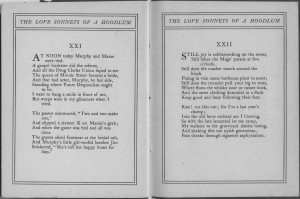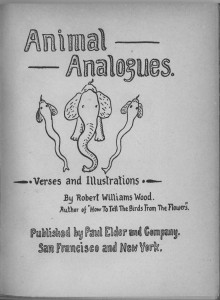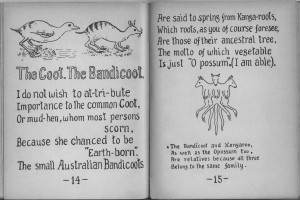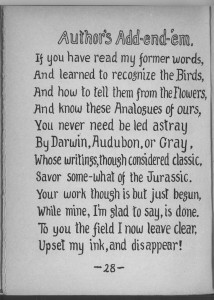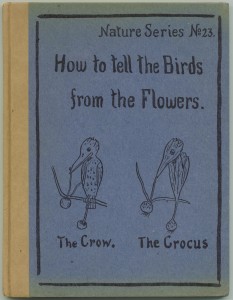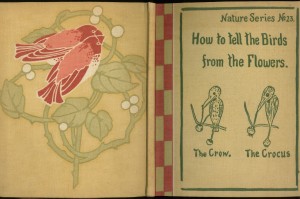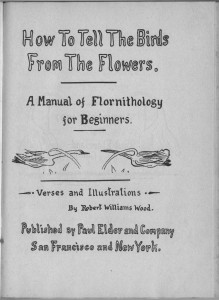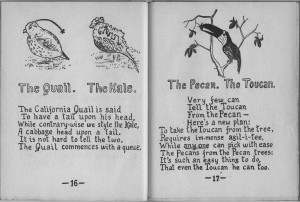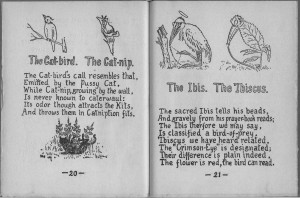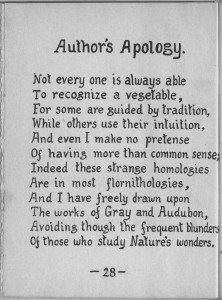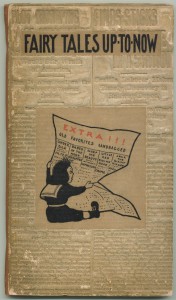
Extra, extra, read all about it! Wallace Irwin rewrites old fairy tales!
In contrast to Irwin’s Love Sonnets of a Hoodlum, whose humor is obscure to modern readers, his 1904 Fairy Tales Up-To-Now is fairly accessible. The book contains five poetical satires of five classic children’s stories titled with tabloid newspaper headlines. Cinderella, a stenographer working for 50¢ a day, goes to the ball in a rented gown, but when the Prince discovers that her diamond slippers are just paste, he rejects her because he’s broke and needs a bride who’s wealthy. Cinderella, though, becomes a millionaire by selling faux-diamond slippers. Jack, of Beanstalk fame, rides off to slay the Standard Oil Giant, but is given a job instead, rises to the rank of treasurer and becomes a Giant himself, but then returns home to endow a library, gas-works and church.
A charming feature of the book are the front and back covers, which are flongs, temporary paper molds used for printing newspapers. Stereotype metal was poured over the flong, then the stereotype was wrapped around the press’s cylinder for printing. After the day’s press run the flongs were normally discarded, but here they were sent to Elder to be cut up into covers. Each individual copy of Fairy Tales Up-to-Now is therefore unique. With a newspaper index service, it should be possible to find the exact page a given flong was used to print. At least one flong was from the San Francisco Call, but Elder may have used flongs from other local newspapers as well. Fairy Tales Up-to-Now was also issued in paper wraps instead of flongs, perhaps cheaper but far less whimsical.
Thanks to Molly Schwartzburg and Andre Chaves for information about flongs.
